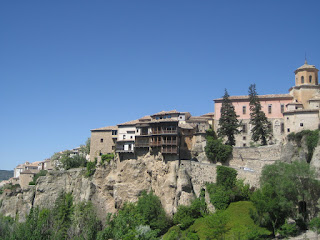
Excuse the cliché, but Sarlat is a rare diamond. I remember reading Michael Crichton’s Timeline, which was set in France’s Dordogne Valley. I had read about Medieval castles perched on hills overlooking the Dordogne River and was eager to check out this part of France. Sarlat is the area’s largest town.
I spent the afternoon on a relaxing walk throughout the Medieval center of the town. The cathedral, unlike most of the ones I have seen, is not Gothic. Instead, it was built from tan stone with a gray turret. The other buildings in Sarlat were mostly built with tan stones and brown or gray roofs. The shutters, which range in color, was my favorite part.
I also got a chance to visit the interior of some of these Medieval buildings. This is because many of them have become art galleries. Thus, I got to enjoy contemporary art while also admiring architecture. The most intriguing aspect of these buildings was the spiral staircase.
I was quite disappointed to find out that Sarlat is actually not by the Dordogne River and that one needed a car to fully explore the chateau, caves and ruins in the area. However, with most of the places I have visited, there is always a next time. The first visit is merely to sample the “icing on the cake”.





















